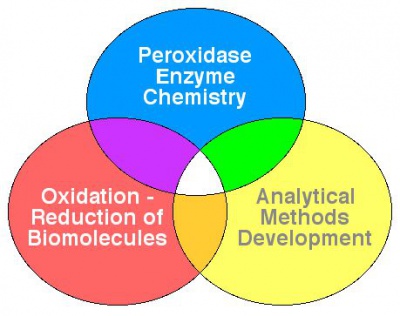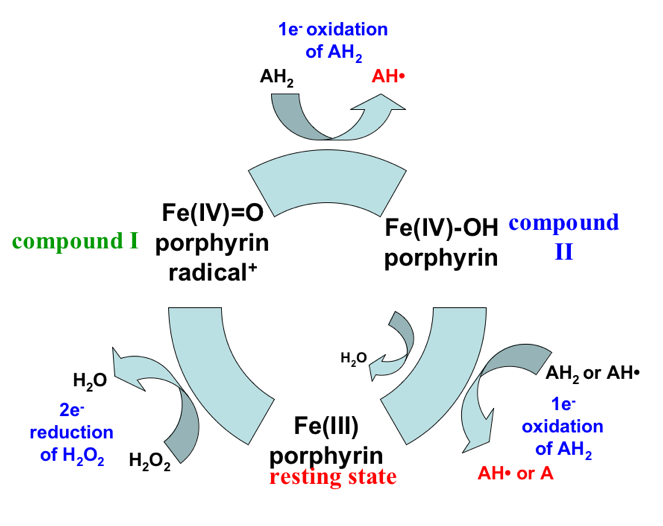Difference between revisions of "Sturgeon Research"
| Line 77: | Line 77: | ||
[[William_B_Fox|Will Fox]] | [[William_B_Fox|Will Fox]] | ||
| + | |||
| + | [[Samual_M_Argubright|Sam Argubright]] | ||
| + | |||
| + | [[Josie_K_Welker|Joise Welker]] | ||
[[Current_Spring_2017|Spring 2017]] | [[Current_Spring_2017|Spring 2017]] | ||
Revision as of 16:22, 28 May 2019
Our group is engaged in activities which will assist in the understanding of how small organic molecules interact with biological systems. Our research goals can be understood in the context of a pharmacological theory called ADME. ADME stands for: Absorption, Distribution, Metabolism, and Excretion. ADME generally applies to humans and drugs (small organic molecules) and strives to answer the following:
- How is the drug absorbed into the body?
- How does this drug distribute throughout the body?
- How is the drug metabolized within the body?
- How is the drug excreted from the body?
Pharmaceutical companies are actively engaged in finding small organic molecules (drugs) that can modulate the human condition (performance, health, etc). With each new drug, extensive ADME data collection is done in order to understand how these drugs might affect the patient. As you might image, the interaction between a drug and a given patient is highly complex and as a result, pharmaceutical companies are not required to FULLY understand all of these ADME aspects, but do need to present a case to the FDA so that they will allow the drug to be administered to patients. The interactions between a pharma company and the FDA is complex, starting with the pharma company submitting information to the Investigational New Drug (IND) program. After review, the pharma company then submits a New Drug Application (NDA). The filing of an NDA will lead to human clinical trials and ultimately a prescription drug.
In our research group we DO NOT work at the level of a pharma company and DO NOT work with humans or any living animal. We focus our attention on the "M" of ADME, ie metabolism, and the small organic molecules come from a variety of sources. Humans are exposed to many small organic molecules through a variety of ways, including environmental exposure, diet, and voluntary consumption (ex. prescribed drugs and nutritional supplements). Our group has focused our attention on a class of small organic molecules called phenols. Phenols of biological interest are generally referred to as "biophenols." These compounds are fairly soluble in water (an absorption and distribution issue) and are fairly easily oxidized (a metabolism issue). To fully understand the oxidation process, we need to understand the product outcomes. So, when conducting research in our group, students engage in some or all of the following:
- -chemically oxidize small organic molecules/biophenols,
- -enzymatically oxidize small organic molecules/biophenols,
- -use HPLC to evaluate oxidation products from a particular set of experimental conditions,
- -use Flash chromatography to isolate oxidation products,
- -use NMR to characterize oxidation products,
- -use EPR to detect and identify transient (millisecond time scale) radical intermediates formed during the oxidation,
- -evaluate biological activity associated with the primary small organic molecule/biophenol or an oxidation product.
- -isolate a biophenol from a primary/plant source using flash chromatography,
Almost all student projects start with a biophenol. Once the student has a general understanding of the importance of the biophenol, then experimentation starts.
The above research examples fall under 3 main areas:
General Research Areas
Generally a student research project has a primary focus on one of the three areas below. It is impossible to study the oxidation of a biophenol without using an analytical method, so each research student will generally engage in all three areas, but one area will be emphasized more than the others.
|
Student Research Project = x% A + y% B + z% C
|
Oxidation/Reduction of Biomolecules
Oxidation/Reduction of Biomolecules
Peroxidase Enzyme Chemistry
http://chemwiki.ucdavis.edu/Core/Biological_Chemistry/Catalysts/Case_Studies/Horseradish_Peroxidase
Analytical Methods
Specific Research Details
General Initiatives
Monmouth Microbiome Initiative
Biophenols as Secondary Plant Metabolites
Ovoperoxidase from Sea Urchins

